This was a great SaaStr Scale IRL session we did a little while back that in the run up to SaaStr Annual I wanted to give a little more attention. First, to get folks excited for the type of content at SaaStr Annual!
But second, because this is a really great topic not enough folks explore. What should a CEO really expect from their CMO? And what’s … not fair to expect?
I have this discussion a lot with CEOs, especially those in the break-out stage, as they are passing $20m+ in ARR and realize they are ready for a “real CMO”.
ActiveCampaign CMO and ex-Anaplan CMO Maria Pergolino and ex-Gainsight, Hopin, and Front CMO Anthony Kennada in this session discuss the playbook to the 10 things a CEO should and should not expect from the CMO. Their personal experiences of how they can help execute on their CEO’s vision, better than he or she can execute it themselves. They walk you through everything from choosing a marketing channel to creating a single go-to-market motion between sales and marketing.
It’s a good one, and I updated and edited it a bit below.
Want to see more content like this? Join us at SaaStr Annual!
Maria Pergolino | CMO @ ActiveCampaign
Anthony Kennada | ex-CMO @ Gainsight, Hopin, Front
FULL TRANSCRIPT BELOW
Anthony: Well, last time we were on a stage together, we were filming B2B Creatives, which thank you so much for being a part of that. It was a blast. I learned so much from you, from, we talked about category creation, why brand matters in B2B. And I think this was just right after you guys took Anaplan public, which congratulations.
Maria: Thank you.
Anthony: I think it is what, $7 5 billion value or market cap today.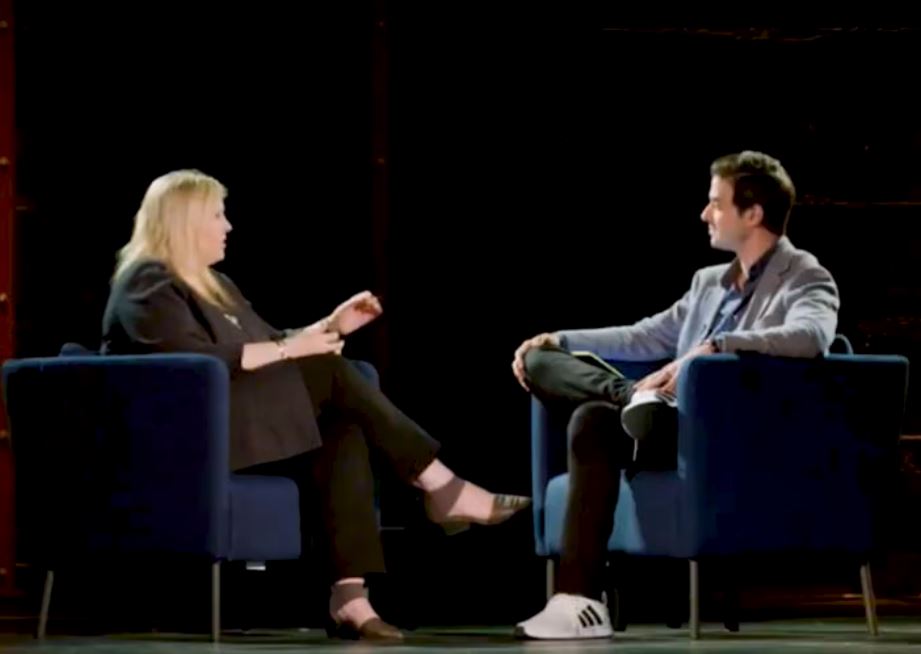
Maria: Yeah.
Anthony: Incredible.
Maria: Not too bad. Yeah.
Anthony: Yeah.
Maria: Amazing. That was fun. That was a super cool event. We were on a big stage in a quiet theater. I’d never been in a theater there-
Anthony: Yeah, there’s a picture. I don’t know if we can get the slide going.
Maria: Oh. Yeah, we need our side. So it was in a big, dark theater, and we just got to talk about marketing. I think the … you having been … It was a good conversation. Anthony has done great category creation. I know we’re going to hear about your book. I appreciate being a part of it. But you’ve really focused in the area of customer success. And I think a good conversation during this … Here we go. Photo’s up. Of that session, just CMO to CMO talking about, how do you take, create this great growth in a category?
Anthony: Yep. Totally. It was. And I think what’s cool is we both actually now have this time to kind of take a step back between tours of duty, think about kind of what we want to do next, see a lot of these different companies. And one thing I’ve noticed is the demand for great marketing talent it seems is higher than it’s ever been before. Whether it’s checking LinkedIn messages or Twitter or maybe some weird text messages, it feels like it’s never been a better time to be a CMO than today.
Maria: No, I totally agree with that. I know you’re going to see this chart here. When we were talking about this, I shared with Anthony and we put it in this presentation. This is my rough Excel, like a little tally of the different opportunities that have come to me as people have realized that I will reenter the workforce soon.
Maria: I mean, I’ve talked to over 60 recruiters. There’s been 58 different opportunities and I think it’s important to recognize that more … Like it is a … CMO has the choice of the companies they want to go to. And so really understanding as a CEO or as a leader, what you bring to the conversation, what you’re looking for in a marketer, and then being able to be very specific and find that good match as opposed to trying to play a volume game you’re just not going to win.
Maria: I think the other thing too, just on this point is finding somebody that’s worked in the right size company too, so that you’re not paying for something that you’re not yet too, right? Just having, saying, “Hey this person, I’m going to use them because they’ll be great when we’re 30 million larger in revenue.” That’s a lot of cost that you’re caring for that.
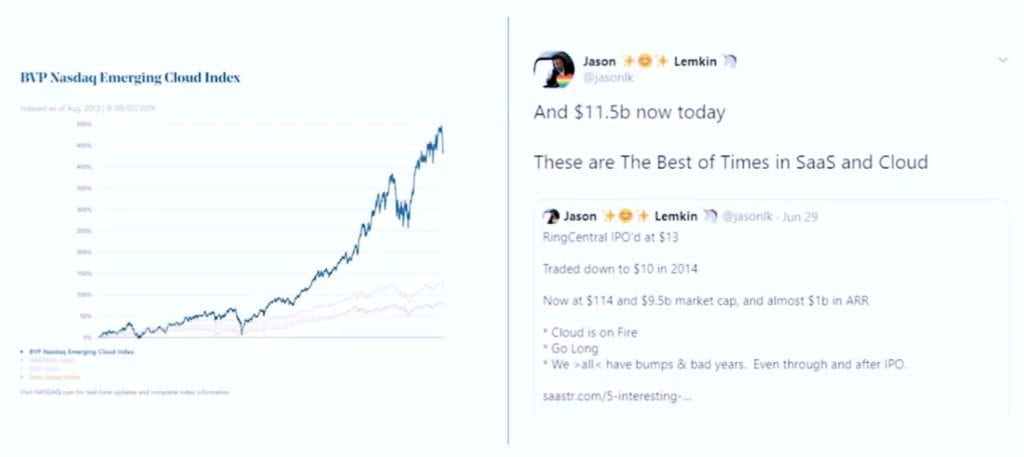
Anthony: Oh totally. And I think that the reason why this is … another reason why I think this is a really big time is it’s this bull market that we’ve been in, and Jason referred to it downstairs. We were listening to that session, The Best of Times for Cloud and SaaS. So there might be some volatility here and there, but companies are going long. They’re investing in growth. So I think that’s contributing to this importance of kind of investing in marketing and sales.
Maria: Agreed. The tenure of CMOs too is something that as you think about that CEO-CMO relationship, it’s the one that’s the shortest in the C-suite. You see this headline here and it doesn’t sound so bad, 43 months. Wow. We would love to have our executives on board that time. But that’s of the CMOs at the top 100 companies. When you look at tech CMOs, I would argue that the average has to be, and there’s some research to this, less than 18 months. And so how do you get this role right so that somebody is with you and you have a partner through the duration is really, really critical.
Anthony: Totally. And I think there’s one other thing too that may be more intangible. It’s that CMOs are looking for this trust … This opportunity to build trust with a CEO, someone that they can kind of go, build a generational company with together. And CEOs are being picky too. They want to find CMOs who can sort of be stewards of the brand, can really help kind of shepherd the company to that next chapter of growth. And so it’s adding to some of the complexity I think between these relationships.
Maria: It is an important dynamic. The article we have up here is from Jason and it actually, Anthony is I think part of what inspired it, is how do you find that right CMO? Is it a certain thing? And we’re going to get through some of that during the session.
Anthony: Yeah, I think we’re going to talk about 10 things in particular, 10 things that a CEO and CMO should know about each other. Both in terms of sourcing and finding these folks, but also just the working relationship between these two groups. So should we just dive in, get … You want to do it?
Maria: Yeah, no, I love this.
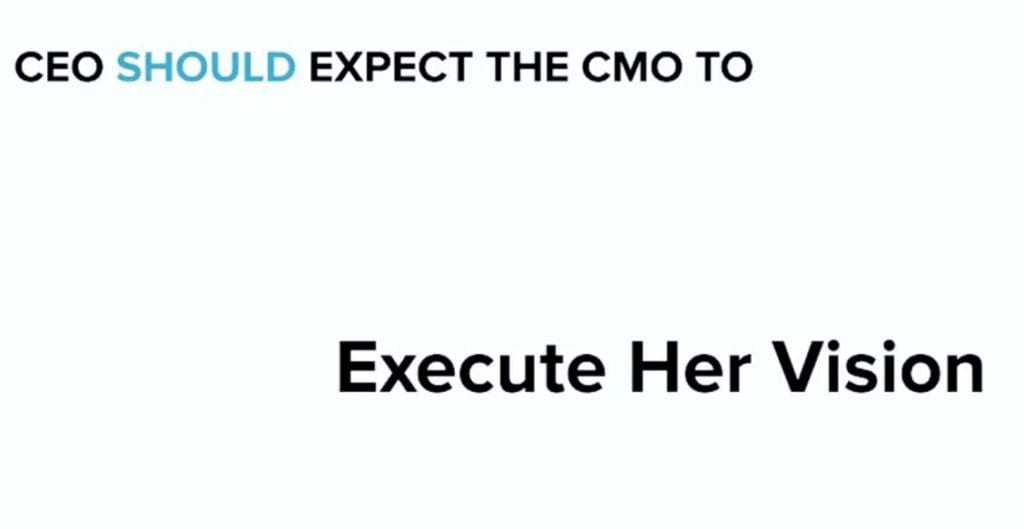
Anthony: All right. So the first one, we’ll start with a controversial one right out of the gates. A CEO should expect the CMO to execute her vision. And the inspiration for this came from a tweet that Jason posted earlier on this subject, and probably the more controversial or debated SaaStr post that I’ve seen. But to me it resonates deeply because I don’t interpret what Jason is saying here as the CMO needs to be a sort of yes man, yes woman, or as we’ll talk about in a little bit, not bring their influence into vision and strategy. But I think marketers need to appreciate that the founder and CEO sets the vision for the company. And our job is to basically find a way to bring that to life, be ambassadors of the brand and bring it out to the marketplace.
Anthony: So it’s not about sort of humbling ourselves. It’s about winning together and building that relationship and that dynamic between the marketing leadership and the CEO is key to doing that. It’s for me one of the best, I believe one of the best gifts CMOs can have is a great CEO, one who’s a visionary, one who thrives on sort of being out in front of customers or the camera or the media or prospects. They want to spend their time doing that. And I’ve been pretty fortunate to work with two of those folks.
Anthony: But the idea that the challenge is even those CEOs want to spend a lot of their time doing that, there’s always an opportunity cost, right? There’s so many different things they should be focused on. So their ability to connect with an audience, connect with the customer and prospect and build trust is critical to sort of realizing that vision. But the biggest challenge, of course, is time.
Anthony: I remember Keith Krach, the former chairman of DocuSign, he said that marketing’s ability to really scale a CEO’s trust building with an audience, that’s a superpower. And so I totally believe that, whether it’s contributed articles, speaking opportunities, podcasts, kind of a one to many opportunity to take that vision, put it in words or speech, and sort of get that out into the world. That’s how marketing can really help execute vision.
Maria: Yeah, and I agree with that. And what Anthony said, we just talked about this. If you were downstairs, around how important that relationship is, and some of those, the way that the CEO can … is that first CMO, right? They have a vision and the marketer needs to capture that.
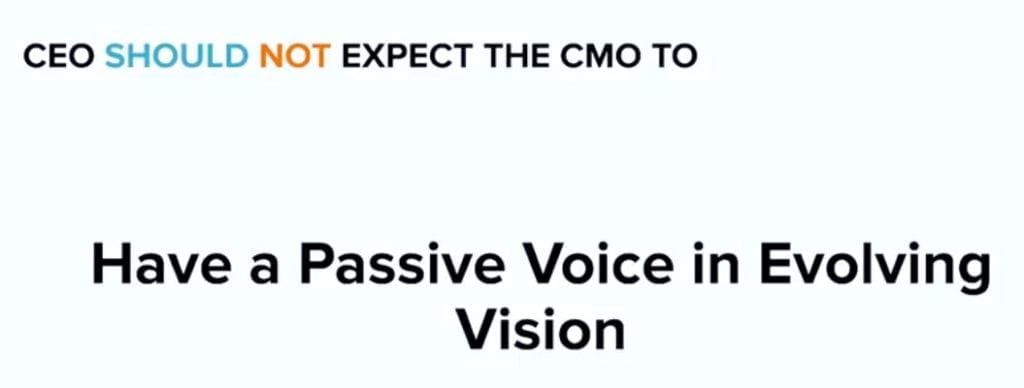
Maria: But the marketer can’t just then rest on that. And this brings us to, you’ll notice this is our nots, this is the don’ts. It should not be that it is a passive voice, that the marketer just carries that CEO’s bag and runs it forward. We have to remember the market that should be in marketing. And so it needs to be a voice back into the organization. It needs to highlight what’s happening in the market. The CEO really needs partnership in that so that they can help form that great decision. And I think sometimes, we’re so busy running forward that we don’t always bring that back.
Maria: It needs to also … Your job as a CMO is not just bringing the CEO’s voice forward to. It’s the entire executive team. There’s things that have to happen that marketing can help with in the organization. The CHROs needing to recruit, the head of engineering is looking for new engineers and how can marketing be a part of their … bringing their vision out as well so that they can get the things out of marketing that those teams need.
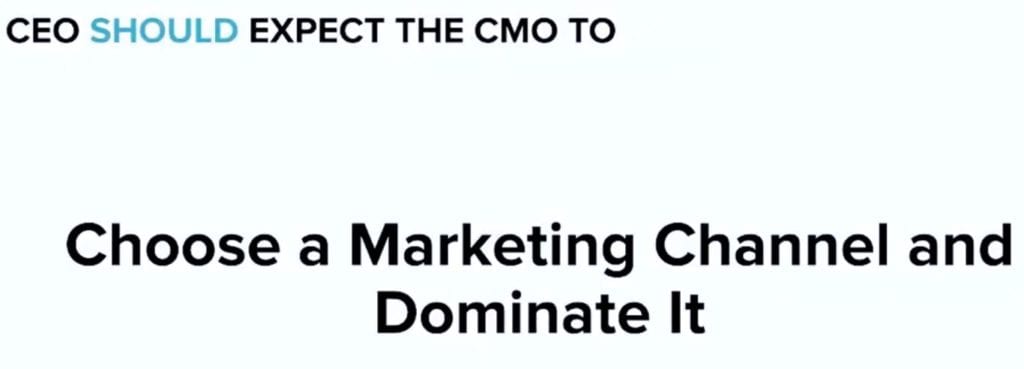
Maria: Our next point, and this is a do, you’re going to see us go back and forth here where we’re going to highlight something they should do and then not do, it’s choose a marketing channel and dominate it. And if we move to the next slide, you’re going to see, and you may have seen an image like that before. You may have heard that if you do, if you just spend your time doing, making sure the blog gets up and getting the white paper out and getting that email out and you fill up the jar with all those little things, you’re not going to have time for the big ones.
Maria: I think the biggest secret to the high growth firms I’ve been with is we’ve placed a stake in the ground. We’ve said, “Hey, here’s some big things that we’re going to do and we’re going to do them better than anyone else.” I have some examples on the next slide. The bottom right I think is one we’ve all seen, right? That Zoom billboard. You’re in an airport, you see the Zoom ad. That is, they are doing that. I mean, I don’t know that any of us here can say, “Hey, you know what great PPC ad we saw for Zoom?” They have done this just really, really well.
Maria: Another example. I don’t know if you recognize the logo, but that’s the Salesforce Trailhead logo, right? Like they have put so much in community and that has become just a staple for their marketing. In the upper left is a strap from a Dreamforce event, but you see the Apttus there. When I was at Apttus, we made that show. Like our goal was not to just get good ROI as marketers. We said, “We are going to, when you look across every sponsor in that room, we’re going to want to get to the most share of voice. We’re going to win that show as a sponsor and we’re going to do that better than anybody else.” And we gave up things for that. We didn’t have a blog the first two years I was there. There’s just things we said, “Hey, it’s not going to matter because we’re going to get an outside share or unfair share from doing some of these things really well.”
Maria: And the last one is definitely a nod to you, the post conference that Gainsight’s done. I think many of us have been there. If we haven’t, we know it. It was just done so well that they … There’s all of your competitors were doing small conferences, a hundred people at them, but they just couldn’t get the share, the mind share because you get this outsize advantage when you do something well.
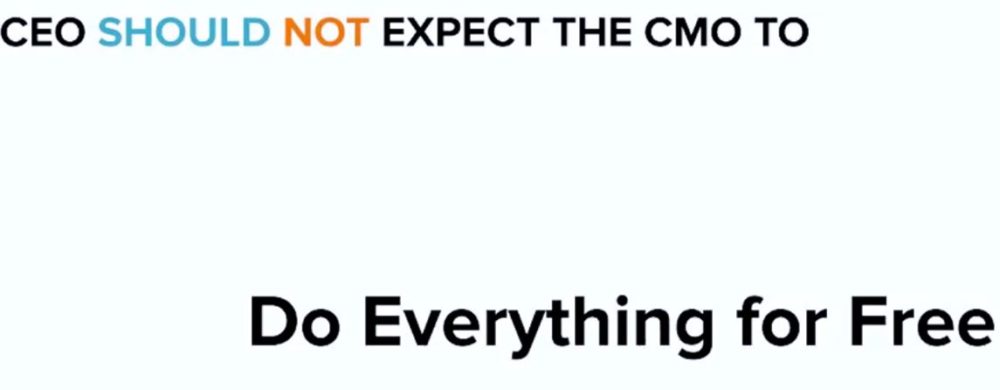
Anthony: Totally. And something well doesn’t always come free, which is I think this next part that a CEO should not expect the CMO to just dominate a marketing channel for free. Don’t get me wrong. There are a lot of great sort of organic channels that do drive growth and talk about blog posts and whatnot. And in fact, for Gainsight, a lot of our growth today still comes from a content asset that we wrote years ago, how do we, how do I structure a QBR. That’s still driving traffic to the site today, and they’re getting into our funnel that way. So it is important.
Anthony: But the reality is that marketing really ought to be viewed as an investment, 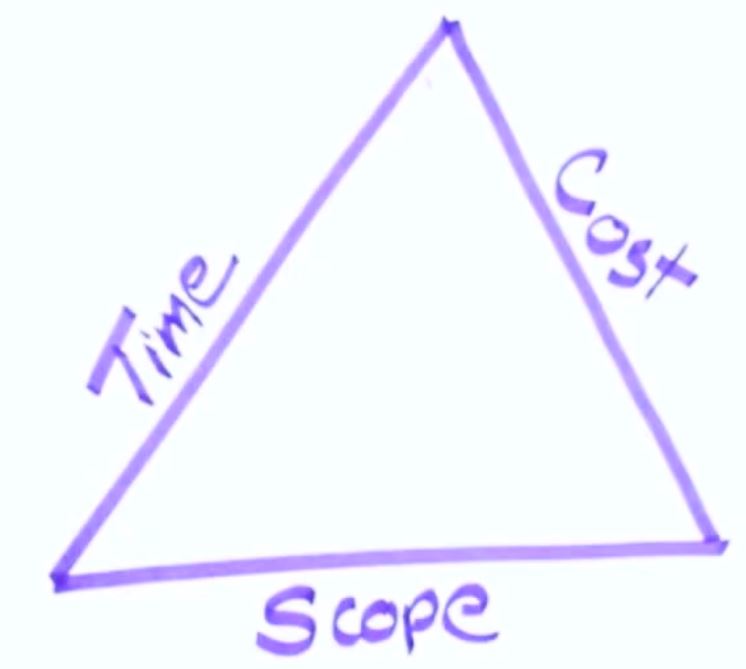 an investment into vision execution. And the quality of work gets constrained by these variables, by budget, by time and scope. So the notion of dominating a market channel for free isn’t really a realistic expectation to set between a CEO and a CMO.
an investment into vision execution. And the quality of work gets constrained by these variables, by budget, by time and scope. So the notion of dominating a market channel for free isn’t really a realistic expectation to set between a CEO and a CMO.
Anthony: And you mentioned Pulse. Thanks for bringing that up. The live events, corporate events were really one big channel that we said, “Hey, this is the one that we’re going to go log on.” So we developed this micro brand called Pulse and it was … It featured this marquee program, which was an industry conference that we just held at the Moscone Center here in May, 5,500 people. But it’s not just an event. This is our biggest pipeline creator deal accelerators, C-SAT influencer, really any business outcome that we could hope to really impact sort of all converged around this event every year.
Anthony: In addition to that, it created this halo effect around the company and the category at large. So how do you put a price on that? You have to. So in our case, the price was about a million bucks of net spend. And in my research for other companies that have done this at scale, that’s more on the conservative side of estimates or of averages. In fact, people are spending so much, companies are spending so much on conferences that they’re literally calling it out on their sales and marketing disclosures from their S-1s when they’re going public. And so if you can’t quantify the impact of these programs on business outcomes, then you’re kind of out of luck.
Maria: If you were downstairs, I talked about this, I talk about this almost every time I talk about marketing, is that we cannot just think about it as marketing. We have to think about it as this overall sales and marketing motion, and really understand what value is being created overall and what part marketing is going to play in it.
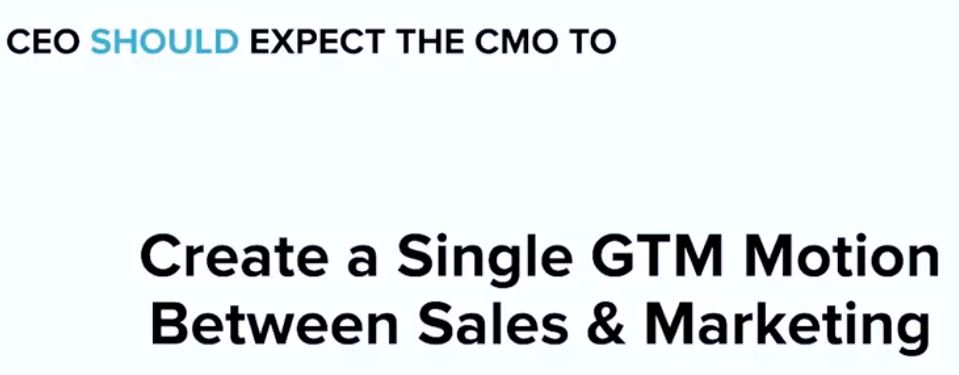
Maria: So whether marketing should be a multiplier for the sales team, right? If we could do it all just with direct sales, like why wouldn’t we? The challenge is, you’d get no … that you’d just get no leverage from that, right? Every time you want to sell another 800,000 or a million dollars, you have to add another rep. You never benefit from scale and scale becomes very important.
Maria: So marketing is that multiplier in the front, but it has to be something that is discussed across the overall sales team. And you have to understand you’re all going to the same place. You’re trying to do the same thing. There should be one set of metrics between them that’s indicating the health of that revenue and what the future revenue is to come. It should be agreed.
Maria: And then sales and marketing leader, I hate the idea of sales and marketing alignment issues because we’re going to the exact same place. The example I use this morning, is like, we’re all just deciding how to walk over to target. And who cares if we go one way or the other. It’s just agreeing that we’re going to target agreeing to those goals and then each presenting a plan saying, “Hey, this is how we want to get there.” And I think that CEOs should expect that shared voice across the go-to-market team.
Anthony: Great.
Maria: Here’s an example. This is actually just a screenshot from a text message. This is when I was at Apttus, which I had left two years ago. This is a text from a month ago and I have lots of them on my phone from the person that was the revenue leader. He is now at a different company. We haven’t worked together two years and he texts me almost every time he closes a big deal.
Maria: And so that is that shared passion, shared goal that we can’t even break this relationship that happened where it’s so important to me as the marketer who we’re closing because the marketing team understands what we’re trying to do and it’s going to be a celebration that I bring back to the team. I think this is really critical.
Anthony: That’s awesome. Super critical. And I think it’s also important to have alignment at the accountability level between marketing and sales. So that’s why a CEO should not expect the CMO to just rest on their laurels when they hit the pipeline number alone.
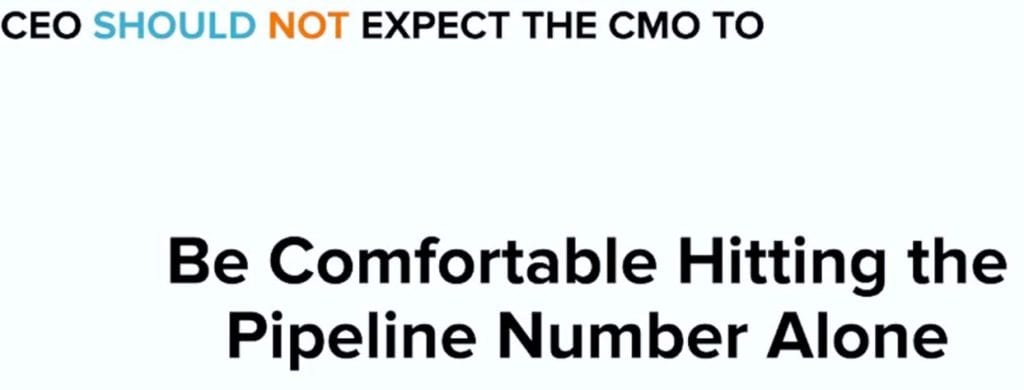
Anthony: So most CMOs are going to be measured by company metrics, so bookings, GRR, cash. But I think the prevailing wisdom has always been marketing. You’re responsible for pipeline sales. You’re responsible for closing. And I think that’s a dangerous idea to believe literally, because here’s what happens if you do. You start to create a world where marketing can celebrate hitting the pipeline target when sales misses the quarter. Or sales says, “I’m not going to prospect, we’re focused on closing. That’s marketing’s job.” So this sort of go-to-market house that Maria’s painting becomes divided and you’re inviting a ton of different issues in for the CEO or the CRO to have to sort of arbitrate. Like who should I believe? And in my experience between marketing’s data and sales’ word and opinion, sales is going to win. So we need to make sure that we kind of prevent this from happening to begin with.
Anthony: Oh, and so here’s how we did it at Gainsight. This was our take on sort of aligning the measurement. We cared about the leading indicators. We cared about database growth, MQLs, SQLs. That was sort of how we ran our business as a team. But what we reported on more broadly was pipeline coverage. We had basically a 50% close rate from what we call the late-stage pipeline to close. So we said we need to start every quarter with 2X late-stage pipe set to close that quarter. So that how we got there, how we got to target didn’t really matter between marketing and sales. We needed to feel good about the late pipe, not just sort of some of the early indicators of pipeline in order to feel like we were accountable to that together.
Anthony: So with expectations about how to measure marketing impact, the next step is, well, how do you represent that impact at senior leadership or at the board level? 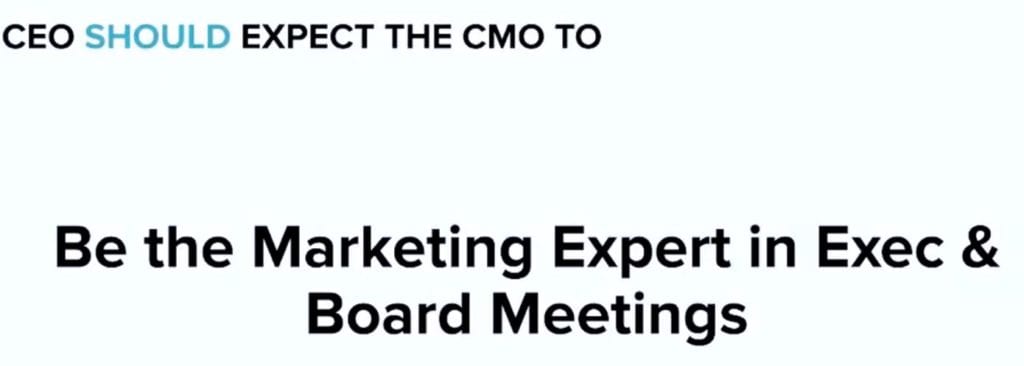 A CEO should expect a CMO to be the marketing expert at these meetings and to have full awareness of his or her business. And the larger and more multidisciplinary marketing becomes over time, the further away the CMO gets from, “Hey, what are the campaigns we’re running specifically this week? How are our conversion targets trending towards that lagging outcome?”
A CEO should expect a CMO to be the marketing expert at these meetings and to have full awareness of his or her business. And the larger and more multidisciplinary marketing becomes over time, the further away the CMO gets from, “Hey, what are the campaigns we’re running specifically this week? How are our conversion targets trending towards that lagging outcome?”
Anthony: But the reality is while that might be the case, you really have to install the processes to have both awareness of that data when called upon, certainly in the meeting, be able to actually speak to the data and interpret it and represent kind of what the teams kind of put together. I found that around the table, around maybe a lot of organizations, a lot of people think they’re marketers, right? And that might sound trite probably because it is, but that’s all the more reason that your voice as a CMO is really important to be that expert in the room and to be able to speak into why this is working or not working.
Anthony: And I think a big part of that is having the right kind of VPs that are kind of the next level down that you’re talking to around kind of what is and what isn’t working, that the data is something that isn’t hiding. But more important than that, just speaking up, just leaning into the metrics, whether the cells are green or red is super important in these rooms. And for very senior meetings, be it board meetings, be it exec staff, it’s super important to spend time prepping with other leaders that are in that room ahead of that meeting.
Anthony: So I go back to the point about the single house. This is about winning together with our sales organization. So ensuring that our sales leaders are aware of the point of view that we’re going to take in that meeting. Let’s get their questions answered ahead of time. That’s going to lead to a better outcome once we’re in the room together. So I think, again, this is something that a CEO should expect. It’s already happening between your marketing and sales leader without having to ask about it.

Maria: So it’s great that marketing’s in the room and has the data for that board, but I think our role goes beyond that.So what they should not expect is for the marketer to only speak up on marketing. The marketing team does see that entire market. They’re talking to analysts every day. They’re talking to press. They’re talking to customers. So marketing should have a view across the entire organization.
Maria: I think one of the things that I’ve learned, as I’m trying to continue to grow in what I do, how do I do that job better, one of the things that I’ve been paying a lot attention to is what the board is bringing to the CEO. I mean there is … If you’re a marketer in the room, signing up and making sure with PwC and Deloitte and Accenture, the board trends that they’re putting out, understanding them because the board is going to be reading those trends and they’re going to be asking your CEO those questions.
Maria: Right now a big trend is consolidation of IT. So when your head of IT comes to you and says, “Hey listen, we can’t have 40 marketing apps and security and trust as an issue. And so we’re consolidating some of this because it’s really important how we look at our customer data,” going, “Oh my gosh, I need every one of these tools and I’m buying 10 more,” is not the answer. It’s understanding those board trends, understanding why the CIO is coming with that question and being able to respond to it and be smart about that.
Maria: I think even beyond that too, understanding the other pressures that the other leaders have in the team and being able to, and you mentioned some of this, give a voice to that, not just in sales, but if there’s a professional services question or a product question, to really come with an informed and purposeful answer and opinion to that topic so that the CEO can make the best decisions possible.

Anthony: Yeah. Totally. All right. So the CEO should expect the CMO to contribute big ideas. It’s never been easier to bring a SaaS product to market. Look at all of us here in the room and everything that’s SaaStrhas built. Because of that you can appreciate that products are kind of on a natural course towards commoditization themselves. The delivery model just sort of enables that. So companies need big ideas right out of the gates to stand out from the crowd. And I think the CEO should expect her CMO to be right in the heart of that. And I’ll pick on the file sharing industry for a minute, only because I grew up there.
Anthony: If you need to store and share a file online today, there are over 200 vendors that can help you with that, 200, and this according to G2. That’s a great thing for consumers. But sometimes what’s great for consumers isn’t great for vendors that are operating in crowded markets. It may sound corny, but I believe pretty deeply in the Simon Sinek, people buy why you do things, not just what you do.
Anthony: So marketing has a pretty major role to play since customers tend to buy emotionally. And the role is articulating or coming up with big ideas and creative ideas on how we articulate the why, in a way that’s engaging, in a way that’s going to resonate. And I call that brand. And yes, I’m using the word brand in a room full of B2B people. It’s okay. We’ll be fine. For so long we’ve said brand doesn’t matter. I’m focused on growth. I’m focused on hitting the number. And I think for the first time we’re starting to say, “Hey, brand may not be a distraction from growth. It might actually be like the sustainable lever to actually growing the company.”
Anthony: And I think this is true for companies that are operating in commoditized spaces I mentioned, but also for companies that are creating spaces. So the extent to which a CMO can think about the human, the humans, the humanity behind the logos that we’re trying to sell to and come up with ideas to really serve them, whether that’s through our messaging, whether that’s through our content, whether that’s through our events, whatever it is, and really appeal to the humanity of our market, I think that’s going to be a key driver to success.
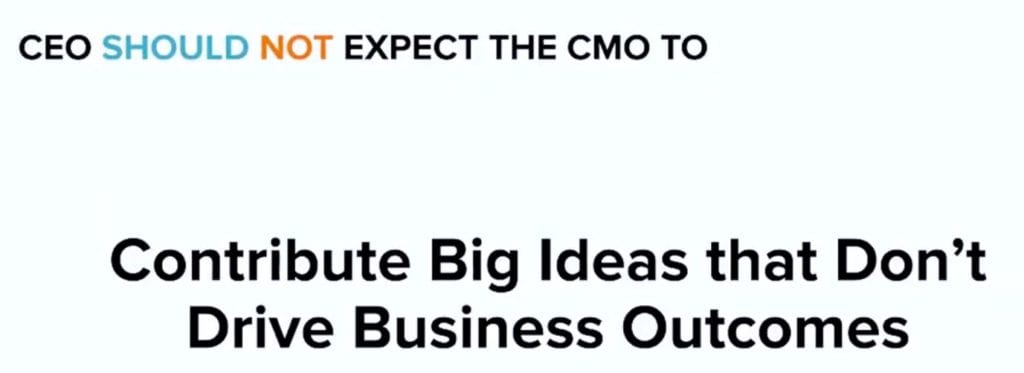 Maria: And while we do want to focus on big ideas, not all ideas are going to drive great business outcomes, right? Not every idea is a good idea. And we’re just going to go right to the next slide.
Maria: And while we do want to focus on big ideas, not all ideas are going to drive great business outcomes, right? Not every idea is a good idea. And we’re just going to go right to the next slide.
Maria: The challenge there is, is all of the … There’s the companies coming and bringing all these ideas. What you don’t want to be is this … I heard somebody said this phrase and I almost died when I heard it. It’s like this idea of the CMO-no and like tell it, like being able to say, “Hey, we can’t do everything.” I think what you have to do is uplevel the conversation. When somebody comes and says, “Hey, I have a great idea,” being able to say why that idea, what are you trying to achieve, and then coming back and being responsive and saying, “Hey, we have this big idea. This is our big rock that we’re working on. It seems to achieve to that idea as well. Let’s really put all in on that. And then let’s decide if we can move forward with your idea later.”
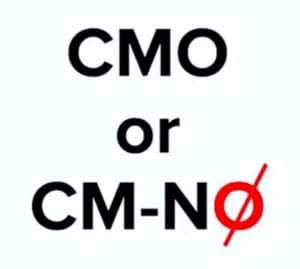
Maria: I think the other thing is, every person in the company, we didn’t ask everybody here who’s a marketer. The reality is everyone is. And if you’re a marketer and fight that it is, you’re going to have not that fun of a career. Nobody comes to the engineer and says, “Hey, this is … ” I’ve never as a marketer, “This is what the line of code should look like.” But lots of people come and say, “Hey, this is what I think we should do for marketing.”
Maria: And I think just really trying to hear that and finding places to give people input. We used to do a big conference, very much like Gainsight at Apttus, and we would set aside a day where we had a room and there were cookies and some fun stuff around it. But we asked people to contribute ideas in the areas where we needed help, where we wanted to do bigger things, letting them share that feedback and then celebrating that, right? Maybe doing some voting after that. Letting people be a part of the marketing.
Maria: What’s really great about that, my job as a CMO, and I say this all the time it’s not that hard to have a bunch of people that come to work to do marketing, do marketing. What is the hard part of the job is how do you get every employee, every partner, every customer, every analyst, every investor, all saying great things and the same things about your brand.
Maria: And by giving everybody a voice, letting people give feedback and then trying to incorporate that in, they will then carry that message forward because they’ll feel like they’re a part of it. And so while not every idea is a big idea, I think you do have to figure out how to capture that voice and really empower everybody to feel like it is theirs.
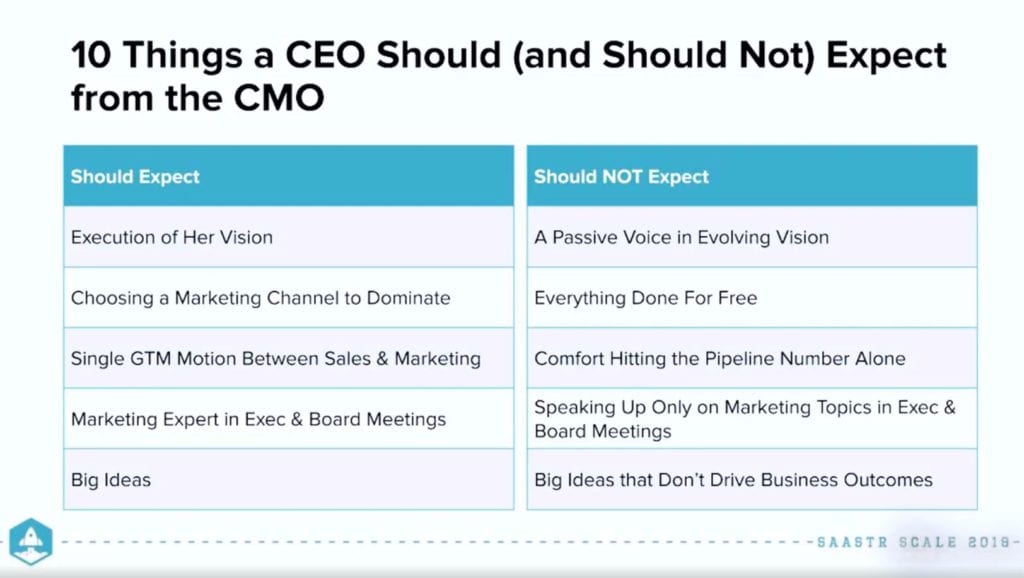 Anthony: Totally. Well, that’s it. These were the 10 things a CEO should and should not expect from the CMO. This was a lot of fun to work together on. Honestly, this was really, really cool.
Anthony: Totally. Well, that’s it. These were the 10 things a CEO should and should not expect from the CMO. This was a lot of fun to work together on. Honestly, this was really, really cool.
Maria: No, I totally agree. And I think these are 10 great tips. We have a little bit of extra time and I’m going to use it. I was panicked-
Anthony: Let’s do it.
Maria: That we were not … I did this. I practiced Anthony’s part earlier this morning and I pulled a bunch of slides, but I’m going to use this as an opportunity to throw in maybe an 11th, and we talked about this and I have been like on a thing about this. I think that a lot of CEOs are right now trying to solve for the problem of today. I’ll talk to a CEO and they say, “Hey, we really need a brand marketer. We really needed a demand marketer.” And I think it’s the wrong way to think about it. I think if you’re looking for a marketer, understanding the stage that you’re in, considering, “Hey, this is somebody who’s helped companies get their product fit or that helps scale,” I think all of that is reasonable.
Maria: But when you’re asking about, when you’re saying, “Hey, our issue, we’ve had great demand but now we need some brand in front of it,” or, “Hey, we’ve had great brand but we’re not getting the pipeline,” and you hire for that specific thing, I think that is also contributing back to those earlier points around the CMO tenure. If you don’t believe that your marketing leader can span across those, you’re going to have somebody there that’s just there for a short amount of time and you’re not going to get what is the great benefit of having a partnership for the long-term.
Maria: And so I would reconsider some of those questions as you are trying to find that right marketer and really trying to understand what it is that you need not just today but a little bit further, and is this somebody that you want it by your side to do that. If you can’t say that your marketer is a trusted advisor, then it’s probably not the right fit. But if they are, then you’re going to continue to work with them as you do go through those different challenges.
Anthony: Yep. I totally agree. That old camp of revenue marketers and brand marketers being these bifurcated paths, that’s just not the reality of today’s landscape. We’ll-
Maria: And actually I want to keep going.
Anthony: Keep going.
Maria: Trusting a recruiter who may be partnered with you to figure out which somebody is, is also just a crazy idea as well.
Anthony: Yeah.
Maria: In the same day I will be … Like somebody will say, “Oh Maria is the greatest brand marketer,” and then later, “No, no, she’s a good demand marketer.” The reality is good marketing is being able to weave across those.
Anthony: Yeah, totally, totally. Well, if you can’t get enough of Maria and I, you can catch up in other places. We did mention that video earlier up online called B2B Creatives. And second, I was actually really fortunate to write a book on category creation that’s coming out in October, and Maria contributed a chapter to it. We got to know each other well I think just kind of growing up here in the marketing circles and have so much respect for your work. And these are some great other places to check it out.
Maria: No, and I appreciate that. The book, if you feel like, “Hey, I’m not in doing category creation, I’m trying to disrupt my category, it’s established,” we saw that crazy chart for document sharing. I think this book does apply to both.
Anthony: Totally, yeah.
Maria: And I’m going to do a little plug for you because you’re so humble. Essentially those pre-orders really matter. I think this is a book that … No, and I appreciate that. The book, if you feel like, “Hey, I’m not in doing category creation, I’m trying to disrupt my category, it’s established.” And then good luck with your CEO and CMO relationship.
Anthony: Right. Yeah. Thank you everyone. Appreciate it.
Maria: Thank you.

